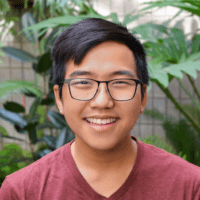
“Marker & Pedigree Hybrid Visualization Tool”
Project Summary:
Cassava (Manihot esculenta) is a staple crop and key source of carbohydrates in many tropical regions of the world. Inbreeding depression has occurred in most cassava populations, resulting in mutations that have reduced yield. In turn, its deleterious mutations pose a threat to food security in developing regions. The creation of a haplotype-pedigree hybrid visualization too will greatly aid cassava breeders to perform marker assisted selection and eliminate deleterious alleles.
The tool was created using JavaScript and HTML for the web page, D3 for the figure, and Perl and PostgreSQL to access the database. The first phase of the project included designing the website and writing functions to collect user input. Then second phase focus on the back end, such as using user input to retrieve the genetic marker information from the database and editing the pedigree tool to support marker visualization. When using the tool, users must first specify list of accessions (or populations) and a genotyping protocol to yield a list of the shared genetic markers. Upon selecting up to seven markers from the list, users can then display the available pedigree of the accessions. These are displayed as parents and children with color-coded markers and dosage values displayed to the right of the respective node.
The visualizer will help breeders follow the flow of alleles through accession crosses and help inform future breeding decisions. Future additions include genetic linkage data of the chosen markers and display of allele pairs with the marker name. The tool can be employed with other plants to eliminate deleterious alleles or perform crop marker assisted breeding.
My Experience:
The Plant Genome Research Program Internship allowed me to explore my interest in both biology and computer science in a way that can create meaningful change. During my time at the Boyce Thompson Institute, I worked on both the user interface and back end of the application; it was especially rewarding to see the completion of the tool from beginning to end. Furthermore, I was introduced to David Lyon and Guillaume Bauchet, my two mentors who provided wisdom and guidance throughout the development process and proved to me that three minds are better than one. This summer research experience has opened my eyes to the possibilities of biological and computational applications to the real world and has solidified my devotion to use technology for the advancement of human health and well-being. Needless to say, I am forever thankful to the opportunities I’ve been afforded by the program.
